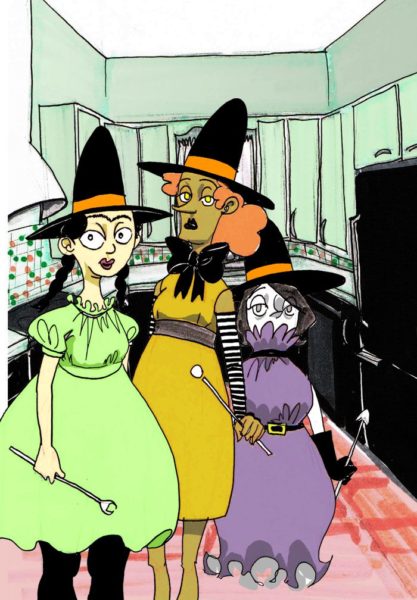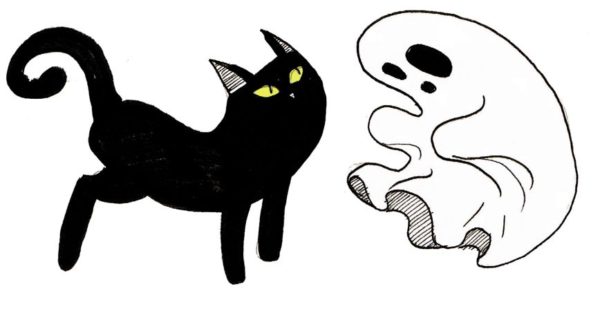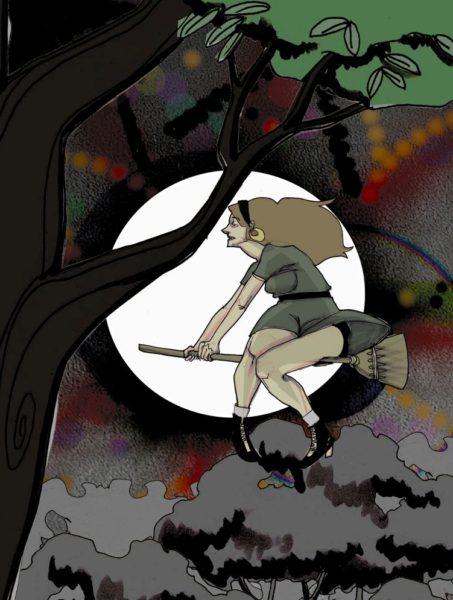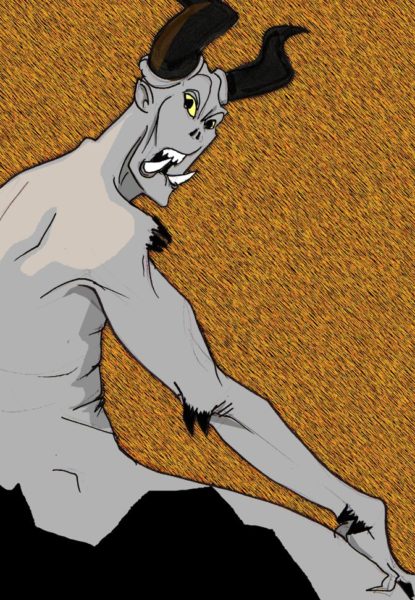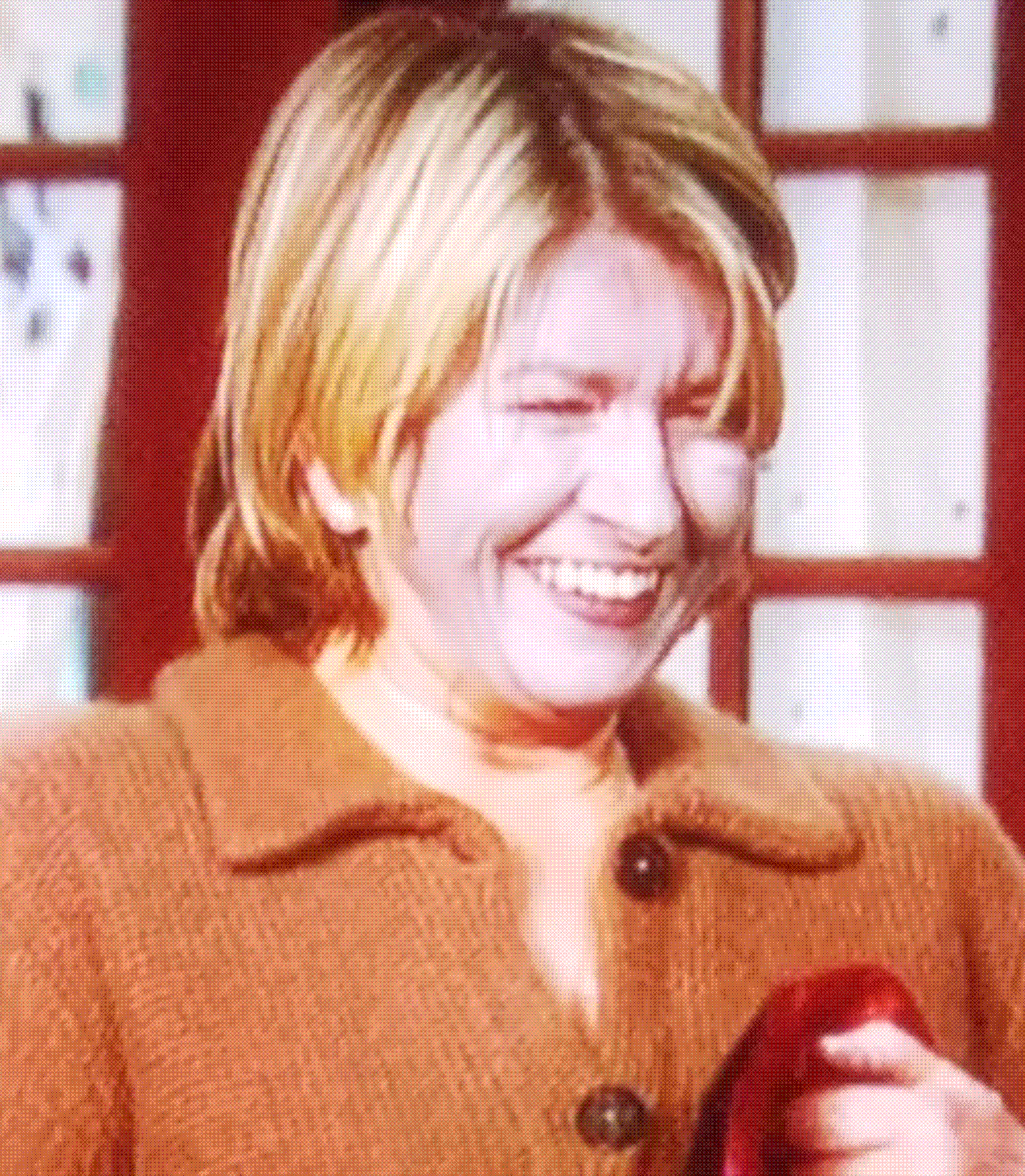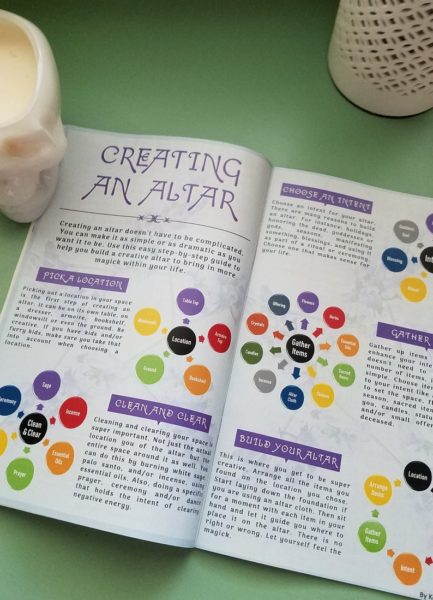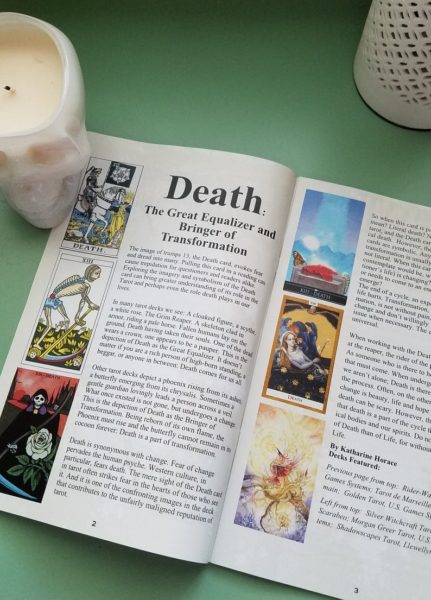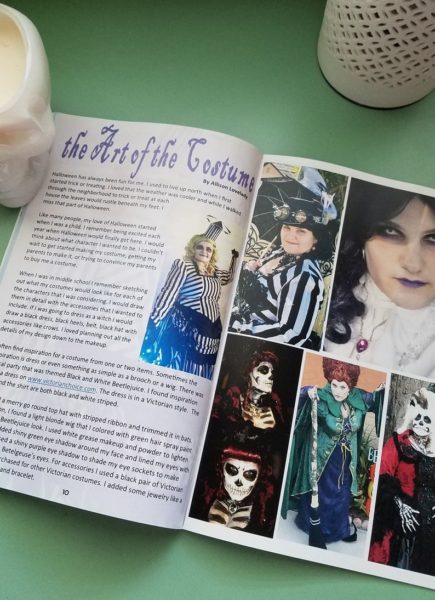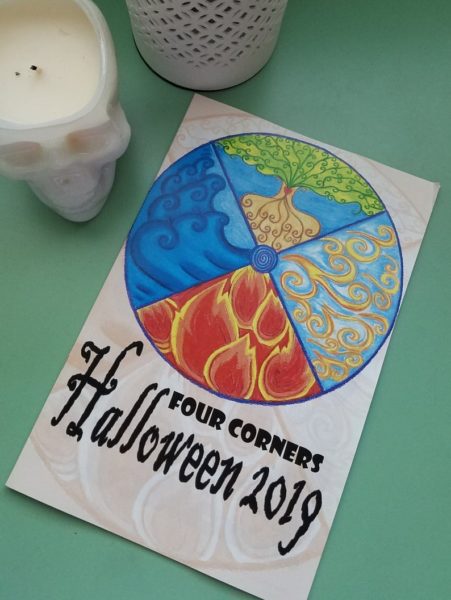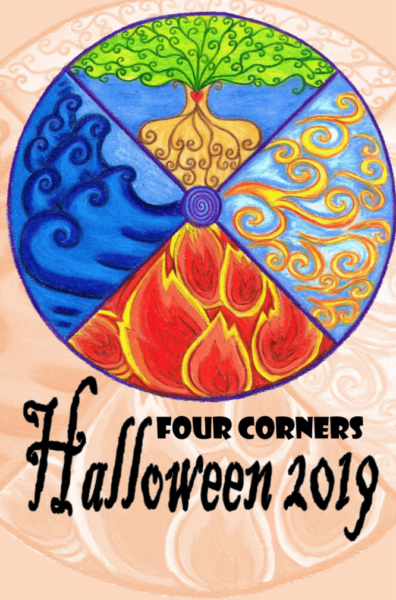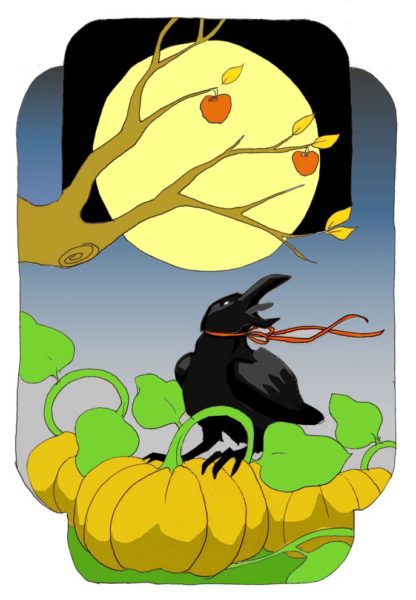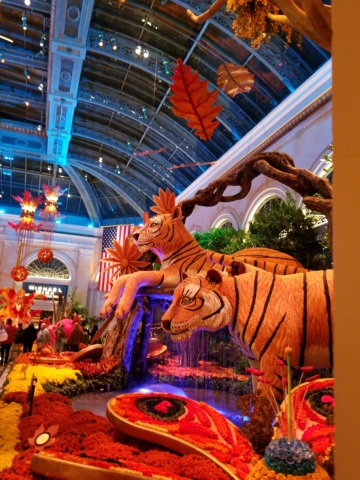I am not alone in being absolutely delighted that a line of merchandise from Hocus Pocus (1993) is available at my local Halloween store. And, I’m sure I am not alone in being disappointed that the merch makers have neglected to make the movie replica I would most like to have: the Black Flame Candle. I was disappointed enough to make one for myself.
I gathered together as many screenshots as I could find from the movie that showed the artwork on the candle. After some unsuccessful searching on the internets for block prints that look like they inspired the original, I decided to wing it.
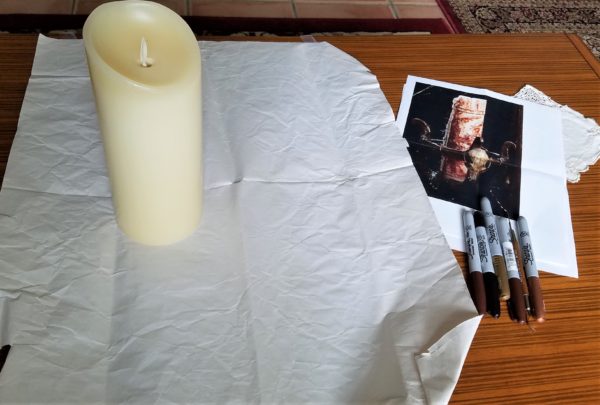
Step One
Protect your surface and gather all your materials: large flameless candle, permanent markers, carving tool, and reference photo.


